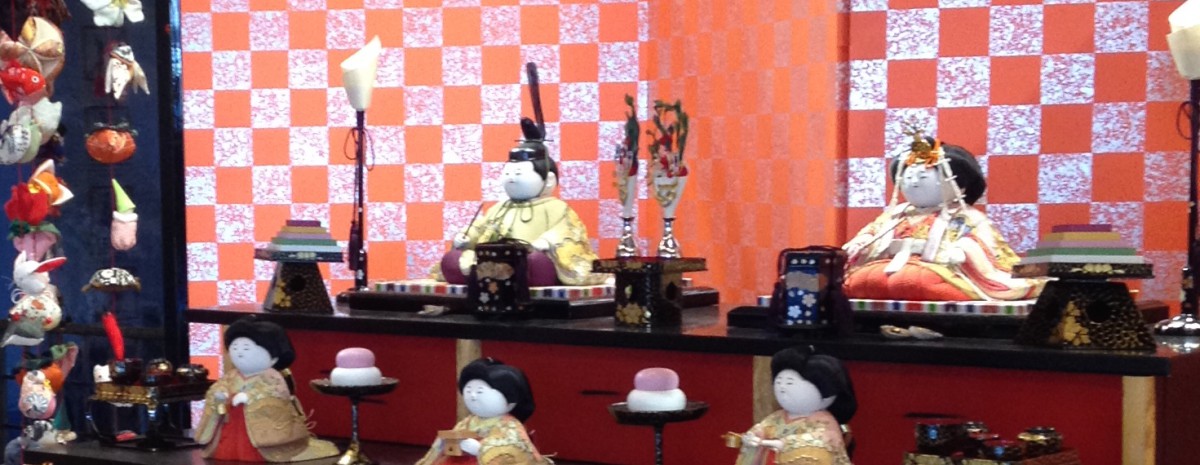Not only Japan is pink at this time of the year. The same is true for our home. Even though it could be my second daughter’s liking of that color, it is not. But with three girls in the house Hina Matsuri becomes kind of a mass-event. Hina Matsuri is the day of the girls in Japan, which is celebrated on March 3rd. This itself would account for a heavy use of pink. But that day is also called Momo no sekku (Peach Festival), as March is the peach blossom season, which bloom bright heavy pink.
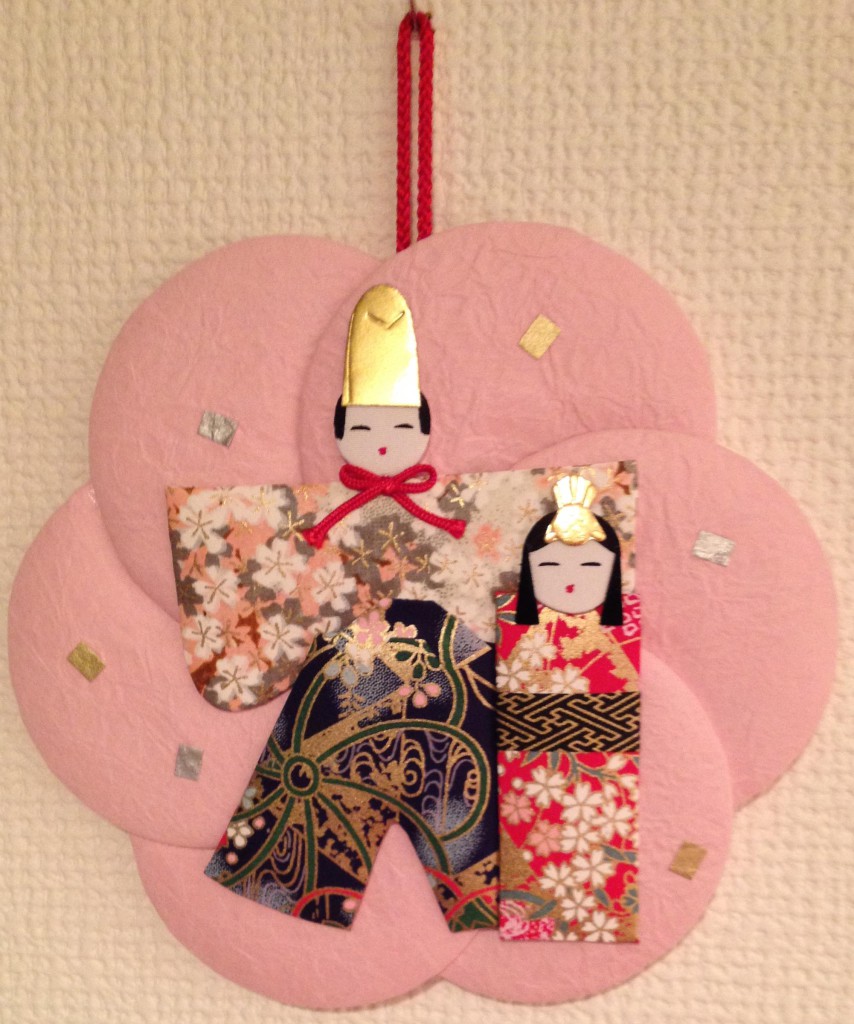
Like in many Japanese Families with girls Odairi-sama (emperor) and Ohina-sama (empress) moved in our home middle of February. Though not with their complete entourage and as a wall decoration in lieu of the traditional Hinadan. A one, three, five or seven-stair display for hina ningyo dolls and former everyday commodities (like tea set, sake cups, swords etc.) that is covered with a red carpet. The Hina Matsuri festival is primarily a family celebration dating back to the Heian period (794-1185) when the dolls came to be viewed as caretakers of the girls’ health and happiness, warding off bad luck and bringing in good fortune.
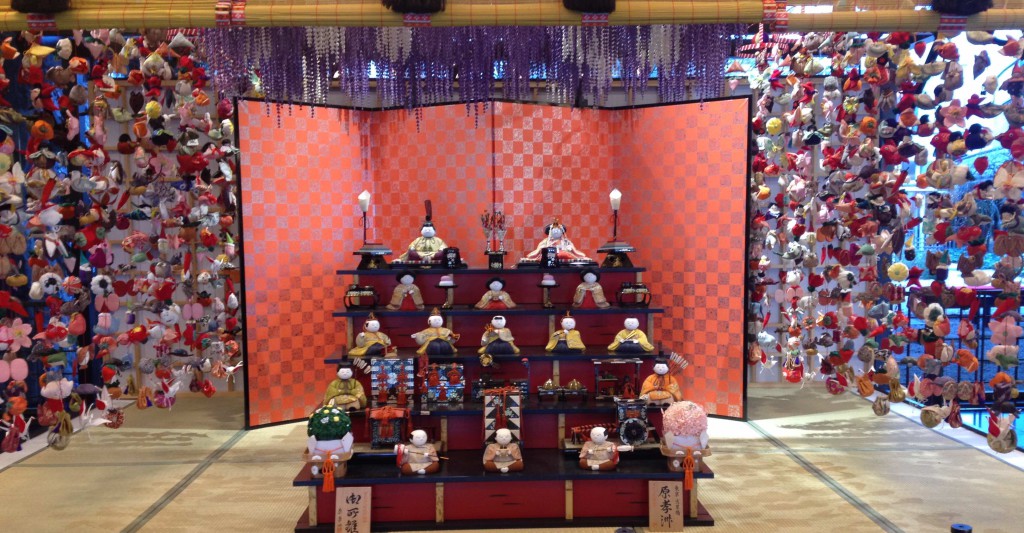
Hina Matsuri is partly reminiscent of Cinderella, as all the decoration has to be taken down before midnight on March 3rd to avoid a delay in the girls’ future marriage. For this year we have set three (!) alarms starting at 11pm. Just to be sure, because we already missed it once and who would want to take chances, right? By the way, Hina ningyo dolls are by no means toys but valuable art crafts, decorated with real gold foil and first-class lacquer, sometimes passed down for generations. The average price for a three-stair display with five dolls is about 2.000€.
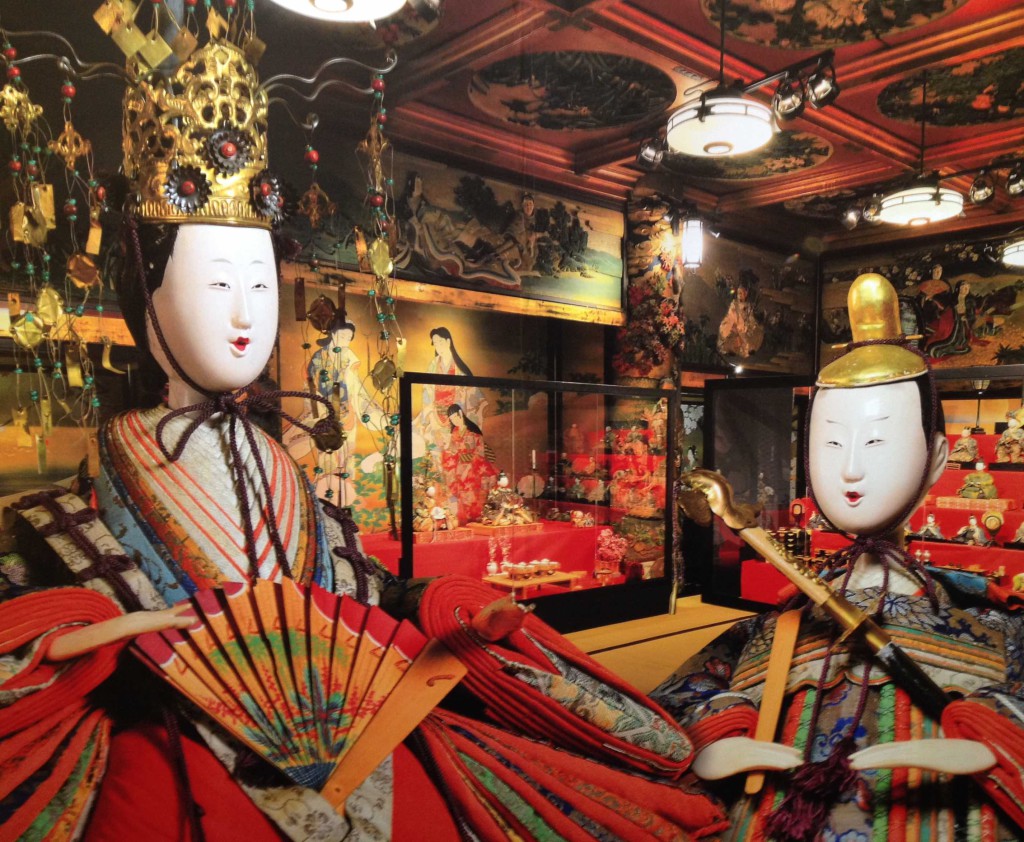
One of the most popular public display of Hina ningyo dolls in Tokyo can be found at Meguro Gajoen Hotel (this year until March 6th). More than 500 Hina ningyo dolls are on display in the seven old, breathtaking banquet rooms that can be reached using the 100 stairs in the old annex of the hotel. The stairs are numbered as a service for visitors. Not quite as motivating as the stairs in the much-loved Tokyu Hands Department store that show the cumulated amount of calories that you have burned, but I don’t want to get overboard.
On the day of Hina Matsuri, families get together and enjoy delicious traditional dishes and sake. Some of them are Hishimochi, Hina arare and Shirozake.
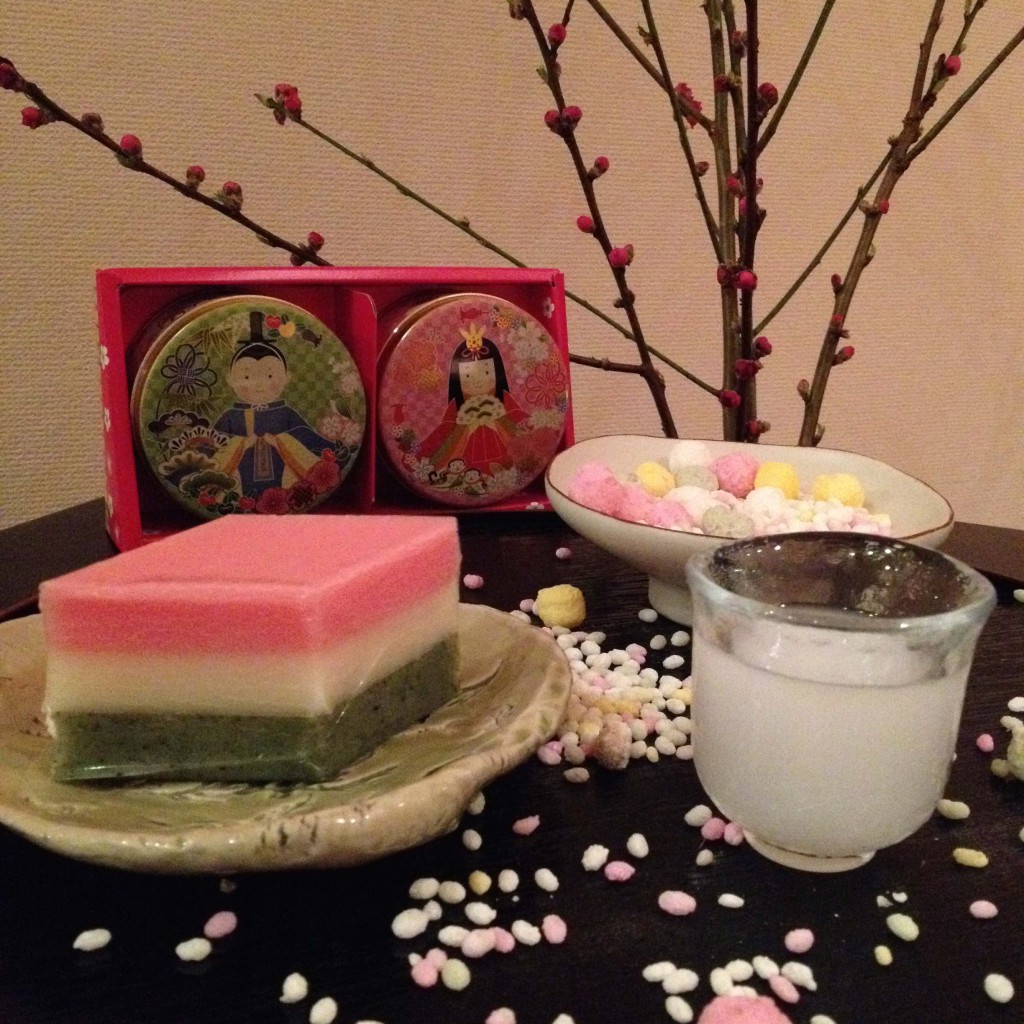
Hishimochi. Diamond-shaped mochi (rice cakes) with pink, white and green layers. The colors representing the pink peach blossoms, the white of the snow of the waning winter and the green for the new, fresh growth of early spring.
Hina arare. Pink, white, green and yellow balls of crunchy puffed rice that are sometimes covered with sugar. Their origin is not quite clear, but it is believed that to make hina arare the left over rice crackers from New Years (Oshogatsu) were turned into rice biscuits in late February, which led to their connection to Hina Matsuri. Given that usually nothing is going to waste in the Japanese Kitchen, it absolutely makes sense. And as such hina arare are a symbol for the economic thrift of a good wife.
Shirozake. White, unfiltered, sweet with a low alcohol content of 8-9%. A sake-like drink that, even though it is called sake, it is technically not nihonshu or seishu (the legal term for sake in Japan). For shirozake steamed rice is mixed with koji (mold for making Sake) and shochu (Japanese rice-liquor), left to age for a month and then sold unfiltered. Shirozake was created around 1600 to 1650. Due to its sweetness and low alcohol content it became tied to Hina Matsuri even though women did not necessarily drink sake in the old days. The white of the shirozake also complements the red (pink) of the peach blossoms and the Hinadan to the traditional colors of celebration in Japan that signify happiness and good fortune.
